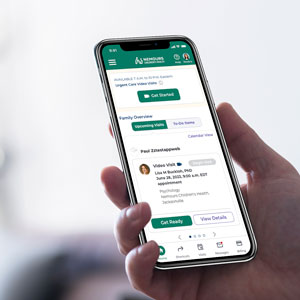Cardiac Outcomes
Exceptional Results in Delaware Valley
Our team includes top specialists in their fields. You can trust us to safely perform procedures and surgeries needed to diagnose and treat heart conditions. And our success rates, or outcomes, prove it.1
We share outcomes, like performance, survival rates and complication rates with other heart programs that do, too. This helps patient families see how programs compare.
We also track certain metrics internally and compare them to nationally published averages. We do this to continuously improve and provide the highest quality, safest care possible.
Our outcomes are among the many reasons doctors and families come to us for second opinions and choose us for the most complex procedures. We’re proud to share them with you.
Nemours surgeons are experts in performing heart and chest surgery to treat congenital heart disease, or conditions kids are born with.
The Society for Thoracic Surgery (STS) is a national organization that tracks congenital heart surgeries and sorts them into five categories, based on complexity.1 The group then determines a program’s expected survival rate for each category. The expected survival rate is a calculation based on a particular mix of children treated, and national results tracked over time.
Hospitals and surgeons voluntarily report this information to the STS, which shares it publicly.
High Survival Rates for Congenital Heart Surgery
Congenital Heart Surgery Survival Rate1 July 2017 to June 2021
Categories | Nemours Rate | Expected Rate
Category 1 | 100% | 98.6%
Surgeries include atrial septal defect repair, ventricular septal defect repair, and valve replacement for pulmonary regurgitation or pulmonary stenosis.
Category 2 | 100% | 96.35%
Surgeries include Ross procedure, Fontan procedure and tricuspid atresia repair.
Category 3 | 100% | 96.8%
Surgeries include complete atrioventricular canal defect repair and arterial switch operation.
Category 4 | 87.5% | 85.88%
Surgeries include Blalock-Taussig shunt, heart transplant and truncus arteriosus repair.
Category 5 | 93.75% | 87.21%
Surgeries include joint heart and lung transplant, Norwood procedure, and combined repair of truncus arteriosus and interrupted aortic arch.
Overall Average | 92.8% | 90.03%
- Nemours cardiothoracic surgeons achieved 100% survival rates for three of the five categories outlined by the STS.
- Our survival rates are better than the expected survival rates for all five categories.
- For the most complex cases (Category 5), which includes joint heart and lung transplant and the Norwood procedure, our survival rates were six points higher than the expected rate.
High Survival Rate for Neonatal Heart Surgery
Neonatal Heart Surgery Survival Rate1 2017 to 2021
- Nearly one in four children receiving heart surgery in our program is under a month old. Our success rates are strong.
- For all newborn surgeries performed, our overall average survival rate of 97.52% exceeds the expected rate of 96.68%.
Learn More About Us
Cardiothoracic Surgery at Nemours
Christian Pizarro, MD
Chief of Pediatric Cardiothoracic Surgery, Delaware Valley
Heart catheterization and interventional procedures involve thin tubes threaded through blood vessels to the heart. These procedures, used both to detect and treat heart conditions, are performed with continuous X-ray image-guidance called fluoroscopy. We safely and effectively use catheterization on the youngest and tiniest children, including those born prematurely.
Our team tracks different metrics like bleeding and other complications, as well as the time a child is under fluoroscopy.2
We compare our rates with centers who report outcomes to the American College of Cardiology’s National Cardiovascular Data Registry (NCDR)®.3
Low Heart Catheterization Complication Rates
Catheterizations Performed Without Complications2,3 2017 to 2019
- At Nemours, 99.1% of our catheterizations were complication-free, with 100% of our diagnostic procedures performed without complications.
- Our catheterization complication outcomes exceeded the national average of 94.6% by almost five points.
- The higher the rate, the fewer the complications.
Less Exposure to Fluoroscopy Radiation During Catheterization
Catheterization Fluoroscopy Time2,3
- Our average fluoroscopy time was half the national average.
- The less time a child is exposed to fluoroscopy, the less X-ray radiation they’re exposed to.
Learn More About Us
Catheterization/Interventional Cardiology at Nemours
Wolfgang Radtke, MD
Director of Diagnostic & Interventional Catheterization Lab, Delaware Valley
Electrophysiologists have special expertise in heart rhythm problems, called arrhythmias. We may use ablation procedures to treat arrhythmias.
Heart ablation involves applying intense heat or cold to small, damaged sections of the heart muscle. This is often performed using a thin tube (catheter), threaded through a blood vessel using continuous X-ray imaging guidance, called fluoroscopy.
Our team tracks our heart ablation success rates, as well as time spent under fluoroscopy.2 We compare our outcomes to those published by the Journal of the American College of Cardiology (JACC).4
High Pediatric Heart Ablation Success Rates
Heart Ablation Success Rates2,4 2015 to 2020
- Our team achieved a heart ablation success rate of 97%, two points higher than the national average of 95%.
- The higher the rate, the better.
- We had zero procedure complications.
Less Exposure to Fluoroscopy Radiation During Heart Ablation
Ablation Fluoroscopy Time2,4 2015 to 2020
- Our fluoroscopy time of 4 minutes was significantly shorter than the national average.
- The less time a child is exposed to fluoroscopy, the less X-ray radiation they’re exposed to.
Learn More About Us
Electrophysiology & Arrhythmia Program at Nemours
Joel D. Temple, MD
Director of Electrophysiology, Delaware Valley
Sometimes, doctors may find a problem with heart development before a baby is born. In those cases, our fetal heart specialists can provide a diagnosis as early as 12 weeks into pregnancy. We develop a treatment plan for a baby’s specific heart defect and provide careful monitoring during pregnancy, with specialized plans for labor and delivery.
The best possible treatment comes from having the most accurate diagnosis before a baby is born. Our team is skilled and experienced in diagnosing heart conditions while a baby is still in the womb.
We report our diagnostic discrepancy rates to the American College of Cardiology5 along with nine other centers. Diagnostic discrepancy is when the pre-birth diagnosis does not match the diagnosis after birth.
Higher Fetal Heart Diagnostic Accuracy
Fetal Heart Diagnostic Discrepancy5 July to September 2022
- With 0% discrepancy, we had 100% diagnostic accuracy, meaning our fetal diagnosis was the same diagnosis after birth in all cases.
- Among nine centers, the mean discrepancy of 8% means a different diagnosis was made at birth 8% of the time.
- The lower the rate of discrepancy, the higher the accuracy.
Learn More About Us
Fetal Heart Program at Nemours
Richard Owen Lorber, MD
Director of the Fetal Heart Program, Delaware Valley
Sources
1 STS Public Reporting — Society of Thoracic Surgeons
2 Nemours Cardiac Center, Delaware Valley 2017-2019
3 National Cardiovascular Data Registry (NCDR) IMPACT Registry for 2019
4 JACC: Clinical Electrophysiology, Vol 7. No. 11, 2021, Table 4
5 Quality Improvement for Institutions: American College of Cardiology, September 2022

